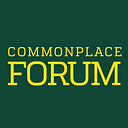Shifting from a scarcity mindset to one of abundance widens the lens of what’s possible
How listening sessions and a statewide media collaboration can help re-earn the trust of the public
There’s a 6th “W” to the list of who, what, where, when and why questions we ask as journalists. To me, that’s “what’s possible?” What’s possible when 60 plus newsrooms across Oregon agree to participate in a media collaboration to better inform voters about the 35 candidates running for governor? And what’s possible when we start by listening to the information needs of Oregonians? Based on our recent Oregon Media Collaborative in producing a side-by-side Q&A guide, we can deliver what voters asked for in relatively short order: information on all candidates to decide which candidates warrant their attention. What started as listening sessions with Oregonians in January (thanks to the collaboration with Rural Development Initiatives and Oregon Capital Chronicle) resulted in an easily embeddable feature on several dozen news websites across the state.
To be clear, news collaboratives aren’t new. In 2019, the Breaking the Silence project highlighted our state’s public health crisis of death by suicide with participating news outlets coordinating and amplifying each other’s work. A few states, such as Colorado and New Mexico, are looking to strengthen and transform local journalism at an ecosystem level by catalyzing a broad-based coalition of information providers. Our friends at the Center for Cooperative Media have a database of several hundred collaborative journalism projects worldwide. To see many news organizations thinking about their community’s information needs and prioritizing collaboration over competition is inspiring.
With our renewed vision at the Agora Journalism Center, the forum for the future of local news and civic health at the University of Oregon, we aim to support local journalism that plays a critical, collaborative role in democratic revitalization. We believe that to regain the public’s trust and produce better journalism that represents the diversity of the public, journalists must keep communities central to their work and find ways to collaborate. Incidentally, that was another lesson from our listening sessions earlier this year: news is more trustworthy if it’s produced by multiple outlets working together so that no one outlet’s voice or perspective dominates.
Collaboration is challenging at any level. In one approach, newsrooms work together to develop common information and produce their own stories with loose coordination to avoid duplication. This short-term collaborative project avoids the challenges of competing organizational cultures and priorities. Think Breaking the Silence, where the collection of stories is listed on this webpage.
Another approach to collaboration encourages news outlets to create content together, requiring higher levels of coordination and frequencies of contact with each other. In the case of our recent Oregon governor’s race guide, several partners collaborated to draft 15 compelling questions, which were sent to all 35 candidates running for governor. The results can then be easily published on participating news outlets’ websites using a tool like Airtable. Either way, if the collaborative project aims to fill the information needs of Oregonians, Agora is here to help.
Everyone knows that these days, most newsrooms are hard-pressed to cover the day’s news as fully as the public deserves. Shifting from a scarcity mindset to one of abundance can widen the lens of what’s possible. What’s possible when we can collectively listen to the needs of all Oregonians when it comes to issues that they most care about? What’s possible when we can pool our resources together to answer questions that our readers and viewers have about this year’s elections? What’s possible when we can see fellow journalists who are skilled in telling stories across print, video, audio, and interactive graphics as news partners rather than newsroom competitors?
If you’re also asking what’s possible in collaboration with both news and non-news organizations, we’d love to hear from you. Drop us a line here or email us at agorajcenter@uoregon.edu.
This column was originally published in Oregon Capital Chronicle.
Andrew DeVigal holds the endowed chair in journalism innovation and civic engagement and is the director of the Agora Journalism Center. The former multimedia editor at The New York Times, he is also the co-director of the school’s Masters in Multimedia Journalism program where he teaches community engagement and non-fiction visual storytelling.

